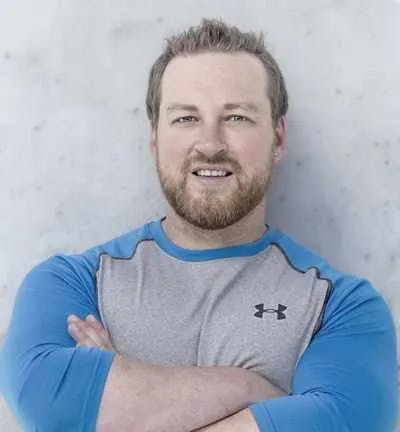Please note: This post contains affiliate links and we may receive a commission if you make a purchase using these links.
TABLE OF CONTENTS
I want you to sit there for a minute and think about how you engage with content these days. Obviously, you still read articles (since you’re reading this). But do you find yourself engaging more and more with both audio and visual content? Think along the lines of YouTube and podcasts. You probably are, correct?
So, my question is, “Why don’t you have a podcast?”
You already know that’s where your audience is, so it only makes sense to fish where the fish are, right? Starting a podcast is fairly simple and straightforward, but to those who never tried to start one, it can seem quite daunting. For that reason, here's a guide on how to start a podcast in 2020 to help promote your LLC or personal brand.
How to Start a Podcast
Starting a podcast is actually quite simple, it’s the content and growing your audience part that can be the most challenging of it all. Let's break down how to start a podcast from the beginning so you can leverage this audio format to expand your personal brand or business in 2020. Below you will find the actual steps to follow in order.
First and foremost, if you are thinking about turning your podcast into a full-blown business, consider if it is a good time to set up an LLC for your podcast. Now, let’s talk about how to start a podcast and get it up and running.
1. Choose Your Podcast Subject
Now that you’ve decided you are starting a podcast, you need to think about what subject you want to talk about. The more you niche it down, the better. Think about if you specialize in a certain area. For instance, rather than talk about “business” as a whole, maybe you want to focus on startup businesses and tips/strategies that can help those who are just starting a business.
The first idea you come up with may not be your true passion or something you want to talk about every episode. Therefore, write down a few ideas and mull them over for a little until you know you’re comfortable with the subject enough to run with it.
Buzzsprout, a podcast hosting service, found these to be the most popular podcast topics in 2019:
2. Decide on a Podcast Name
Once you know the subject of your podcast, the next step is coming up with a catchy name. Make it something that anyone reading the name could identify what your podcast is about. If the name is vague, people will tend to scroll right past it in a search. Using the example above of startup business, something like “The Business Startup Podcast” could work.
If you are, indeed, thinking about turning your podcast into its own freestanding business, check out this free Business Name Search tool to see if the name you are considering is already taken or available for you to use.
3. Create Your Show Artwork and Description
Now that you’re in the meat and potatoes of how to start a podcast, you need to think about your show artwork (think of it like an album cover or the avatar of your social media platform). This needs to be something eye-catching that will draw people in. If you aren’t very creative or artistic, your best bet will be to outsource the project.
If you feel you are capable of creating the artwork yourself, you can use a website like Canva, which is free and easy to use. For most podcast platforms, your artwork will need to be a minimum size of 1400 x 1400 pixels and a maximum size of 3000 x 3000 pixels, 72 dpi. You should save your artwork either as a JPEG or PNG.
The next part of how to start a podcast is to create a show description. This explains what your podcast is and the subject it covers. This should be engaging and written in such a way that will intrigue someone to want to subscribe to your podcast and listen to your episodes. Sell them on your podcast’s value.
4. Purchase Equipment and Test It Out
When starting a podcast, it can be easy to feel overwhelmed by all the equipment you can purchase. My best recommendation on how to start a podcast when just beginning is to not break the bank until you are 100% certain this is something you’re going to continue. Equipment can get insanely expensive and a professional setup can cost you well over $2,000.
A good starting point and a microphone that I personally use is the Blue Yeti microphone. It’s a simple plug-and-play microphone that uses a USB-A cable to connect to your laptop or computer. It is also recommended to purchase a pop filter to put in front of your mic to (as the name implies) filter out any popping sounds from being close to the microphone. Pop filters are very inexpensive and easy to attach directly to the microphone mount itself.
Software is going to be your next task to accomplish before starting a podcast. What do you want to use? Do you want to buy professional recording and editing software or do you want to test the waters first to make sure podcasting is for you? What I would recommend is to download a free software called Audacity. This is the software that I use for both of my podcasts and it works wonderfully.
5. Choose Your Podcast Channels
Do you only want your podcast to be available on a single platform or multiple? The choice is completely up to you. If you want the most downloads and listens, you’re going to want them on as many as possible. Here's a list to consider uploading your shows to:
- iTunes
- iHeartRadio
- Stitcher
- Spotify
- SoundCloud
- Google Play
- YouTube (all you need is an image to play instead of video)
Buzzsprout found these platforms to be the top places people listened to podcasts. Ensuring you're on at least one of them will give you great access to listeners.
Pick and choose the one you want to use, or all of them, and create an account on their platform. Signing up will be free, you’ll just need to have your artwork, description, etc. ready to go before this step. You’ll also want to have a link to your hosting site for the podcast as well (you can do this for free over on FeedBurner.com if you don’t have your own hosting site).
You can then publish your podcast on your website (a great way to build traffic) and then FeedBurner will pick it up via the RSS feed you designate it to crawl from your website.
6. Write a List of Podcast Show Ideas
The next thing you want to do when starting a podcast is to write down a list of show ideas. Going back to the startup business idea mentioned earlier, topic ideas could be: how to apply for your LLC, how to get an EIN, how to set up a dedicated business checking account, how to apply for business credit cards, how to use business credit cards to earn points to reinvest your rewards back into the business, etc.
While you don’t need to have a particular order, it may be advantageous to have some sort of flow of content so that each episode piggybacks off of the previous. This will help keep your listeners engaged and coming back to see what they can learn next.
7. Record Your Episodes
Now that you know how to start a podcast, the fun truly begins. It’s time to put all of your planning into action and start recording your first podcast and many more to come. The biggest takeaway to starting a podcast is bringing value to your audience. You never want to record something and ask yourself if someone will find it informative and helpful. If that’s the case, scratch the episode and record another.
Recording is as simple as plugging in your equipment, loading your recording software, hitting record and talking about your topic for the podcast. When you’re done recording, you simply hit stop and it’s onto the editing phase.
8. Edit Your Recording
As mentioned earlier, you can either purchase editing software or use a freebie such as Audacity. The key here is to filter out background noise and clean up the audio to sound professional. Some software available out there will even allow you to put in the show notes such as the name of the podcast, the episode notes, podcast host name, year published, copyright information and genre.
I will warn you in advance, you WILL need to spend some time using the editing software to ensure you know how to use it and clean up your recording to get it ready to publish. But after a while, it will come second nature and you won't even have to think about it. Or, if you have the funds or manpower, outsource the editing to someone else.
9. Publish Your Podcast Episode
Once you are done editing your podcast, it’s time to publish your episode. You can put it up on your website and then FeedBurner will automatically see you uploaded new content and push it out to all the platforms you signed up for using the RSS feed from FeedBurner. This will streamline the process rather than uploading each and every episode to all the platforms individually. You can also do all of this on platforms such as SoundCloud and Anchor (it just depends on how you want to set up your podcast).
And that’s it! Now you know how to start a podcast and can record/publish as often as you want. Just a piece of advice, try to be consistent with your publishing schedule. If you want to publish once a week, do so on the same day each week. If you do one day this week, a different day the next week or are inconsistent and publish all over the place and miss weeks, you will notice your audience slowly start to drop off because they find it difficult to follow when you put out new content and can lose interest. Be consistent and most of all when starting a podcast … HAVE FUN!

Matt Weik
Matt Weik is the Founder/Owner of Weik Fitness, LLC and is a well-respected fitness expert/author with a global following. He’s a certified strength and conditioning specialist, personal trainer, and sports nutritionist. His work has been featured in over 85 fitness magazines and over 1,500 websites. You can contact Matt via www.weikfitness.com or on his social channels found on his website.
like what you’re reading?
Get Fresh Monthly Tips to Start & Grow Your LLC




